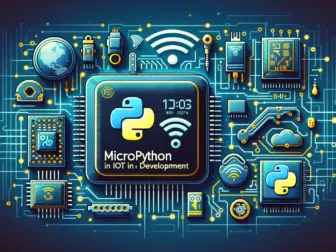Tag - MicroPython
Exploring the Power of MicroPython: A Beginner's Guide to Microcontroller Programming
MicroPython is a lean implementation of the Python 3 programming language that is optimized to run on microcontrollers. It provides a simple and intuitive way to program microcontrollers, making it a great choice for beginners and experienced developers alike. With MicroPython, you can easily control hardware components, create IoT devices, and explore the world of embedded programming.
One of the key advantages of MicroPython is its ease of use. Unlike traditional embedded programming languages like C or C++, MicroPython allows you to write code in a high-level language that is familiar to many developers. This makes it much easier to get started with microcontroller programming, even if you have no prior experience with embedded systems.
Another benefit of MicroPython is its flexibility. It supports a wide range of microcontrollers, including popular platforms like the ESP8266 and ESP32. This means that you can use MicroPython to program a variety of devices, from simple sensors to complex IoT projects. Additionally, MicroPython comes with a comprehensive standard library that includes support for networking, file systems, and more, making it easy to build powerful applications with minimal effort.
Despite its simplicity, MicroPython is a powerful tool for developing embedded systems. Its interactive REPL (Read-Eval-Print Loop) allows you to quickly test code and experiment with hardware components in real-time. This makes it easy to debug and iterate on your projects, reducing development time and helping you build better products faster.
Getting started with MicroPython is easy. All you need is a compatible microcontroller board, a USB cable for programming, and a computer with the MicroPython firmware flashed onto the board. Once you have everything set up, you can start writing and running Python code on your microcontroller, opening up a world of possibilities for your projects.
Whether you are a hobbyist looking to build your first IoT device or a professional developer working on a commercial product, MicroPython is a powerful tool that can help you bring your ideas to life. By leveraging the simplicity and flexibility of Python, you can create innovative embedded systems that push the boundaries of what is possible with microcontrollers. So why wait? Start exploring the power of MicroPython today and unleash your creativity in the world of embedded programming.
